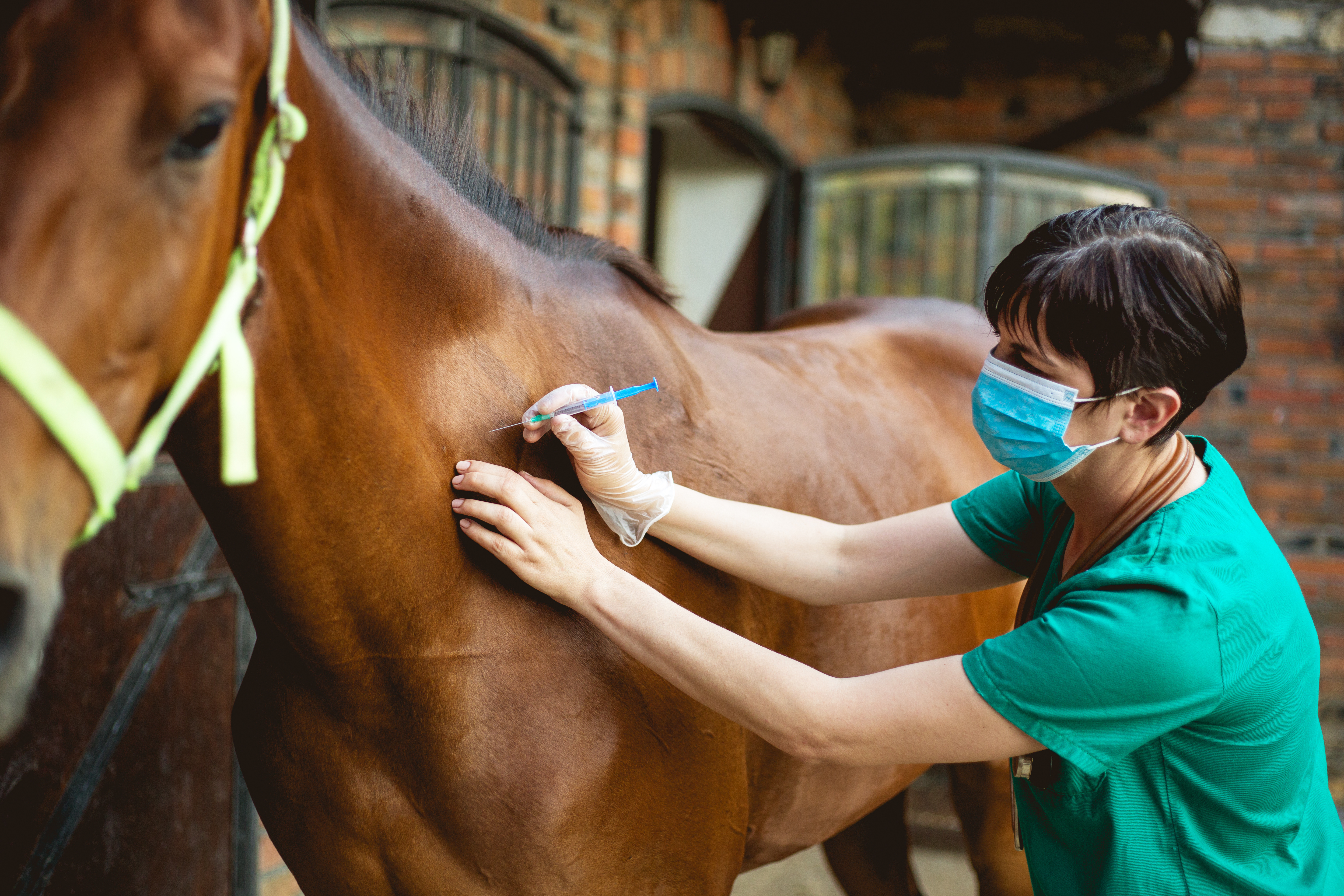Higher bute doses: No benefit but higher risks
- January 16, 2024
- ⎯ Christine Barakat
Research suggests that increasing a lame horse’s daily dose of bute (phenylbutazone) does not provide greater pain relief, but it does heighten his risk of developing a potentially fatal toxicity.

“It’s common for an owner to start giving a horse a larger dose of bute if the horse doesn’t seem comfortable enough on the current amount—the idea being if some is good, more must be better,” says
Ronald Erkert, DVM, who headed the Oklahoma State University study. “But until now, no one had really looked at what effect, if any, an increased dose had on pain.”
For the study, three different treatment protocols were used on nine horses with chronic forelimb lameness. The protocols, which each lasted for four days, were a daily injectable bute dose of two grams per 1,000 pounds, a daily injectable bute dose of four grams per 1,000 pounds and a daily injection of saline solution (to act as a control). Prior to each treatment and six, 12 and 24 hours after the final dose, the horses were examined for lameness and trotted on a force plate to measure the peak vertical force exerted on their front limbs.
The researchers found no difference in lameness scores whether the horses were on two grams/1,000 pounds of bute or four grams/1,000 pounds. “The bottom line is that there is no reason to give a horse more than two grams of bute per 1,000 pounds a day, which is pretty much accepted as the ‘normal’ dose,” says Erkert, noting that although his study focused on injectable bute the same holds true for the oral form of the medication. “Four grams per 1,000 pounds a day is a huge amount, bordering on known toxic levels, but I know that there are horses out there on that because owners feel they need to use that much.” Disorders associated with bute toxicity include gastric ulcers, colic, kidney failure, diarrhea and endotoxic shock.
Bute, like many other nonsteroidal anti-inflammatory drugs (NSAIDs), works by inhibiting the by-products of inflammation associated with pain. If a standard dose of bute does not deliver adequate pain relief, Erkert recommends trying a different drug with a different action. “Horse owners need to consult with their veterinarians about other pain-relief options rather than just automatically reaching for more bute.”
Click here to learn more about the different types of NSAIDs.
He is now conducting a study to compare the effects of one gram/1,000 pounds of bute daily to those of a two-grams/1,000-pound dose. “It is possible that we could be giving an even lower dose and getting the same effects.”
This article originally appeared in EQUUS magazine.
Don’t miss out! With the free weekly EQUUS newsletter, you’ll get the latest horse health information delivered right to your in basket! If you’re not already receiving the EQUUS newsletter, click here to sign up. It’s *free*!








